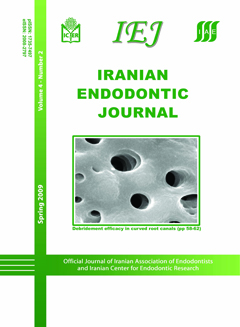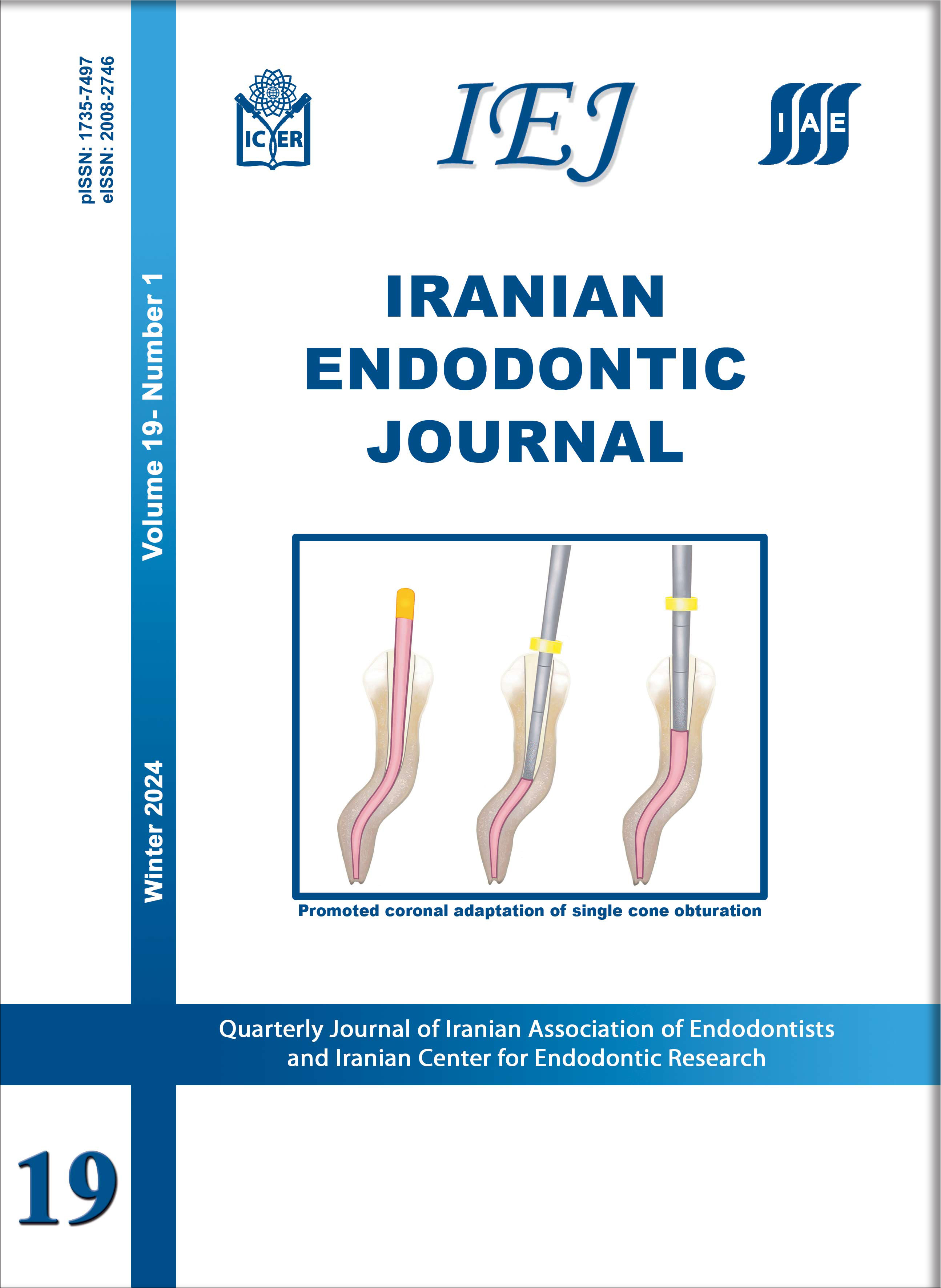Ion release and pH of a new endodontic cement, MTA and Portland cement
Iranian Endodontic Journal,
Vol. 4 No. 2 (2009),
17 April 2009
,
Page 74-78
https://doi.org/10.22037/iej.v4i2.1354
Abstract
INTRODUCTION: This in vitro study measured and compared pH and phosphate and calcium ions release of a new endodontic material (CEM cement), mineral trioxide aggregate (MTA), and Portland cement (PC) using UV-visible technique, atomic absorption spectrophotometry methods, and pH meter, respectively. MATERIALS AND METHODS: Each material was placed in a plastic tube (n=10) and immersed in a glass flask containing deionized water. Half of the samples were tested for determining pH and released ions after 1h, 3h, 24h, 48h, 7d and 28d. Remaining samples (n=5), were evaluated after 28d. Data was analyzed using one way ANOVA and Tukey tests. RESULTS: Results indicated that all materials were highly alkaline and released calcium and low concentration of phosphate ions in all the time intervals. CEM cement released considerably higher concentration of phosphate during the first hour (P<0.05). CONCLUSION: This novel endodontic cement promoted alkaline pH in a similar manner to MTA and released calcium and phosphate. These conditions can stimulate the calcification process and explain the basic physico-chemical mechanisms of hard tissue regeneration of CEM cement.
- Calcium
- CEM cement
- Ion release
- MTA
- NEC
- New material
- pH
- Phosphate
- Portland cement
How to Cite
- Abstract Viewed: 309 times
- PDF Downloaded: 261 times




